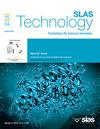使用多种微生物模式识别蛋白和磁珠棘轮的样品制备。
IF 3.7
4区 医学
Q3 BIOCHEMICAL RESEARCH METHODS
引用次数: 0
摘要
样品制备(即从样品中分离和纯化病原体)仍然是限制诊断测试部署的瓶颈之一。最近的两个例子突出了这些局限性,包括在COVID-19期间广泛进行核酸检测和识别耐药感染方面的困难。未满足的需求包括处理不同体液和样本、多种疑似病原体的系统,以及以快速和半自动化方式运作的系统。诸如此类的进展可以通过消除上游样品制备瓶颈来加速新型诊断测试的部署。在此,我们测试了将多个病原体结合的顺磁珠与基于磁棘轮的富集相结合以直接从样品中分离微生物的可行性。我们证明了三种不同的顺磁珠偶联蛋白(甘露糖结合选择蛋白[MBL], c反应蛋白[CRP]和树突状细胞特异性细胞间粘附分子-3抓取非整合素[DC-SIGN])有效地捕获了18种不同的细菌物种和模型病毒颗粒/肽。我们使用磁棘轮从毫升(mL)样品中分离出头结合微生物,浓度为每mL 4 - 4000个微生物。流式系统以每分钟1 mL的速度运行,并在不到30分钟的时间内从10 mL样品中分离出病原体。我们还进行了棘轮后pcr微生物分析的演示,表明该技术可能适用于不同的感染因子、样品类型/体积和分析分析。基于这些结果,有必要进行进一步的研究,以测试临床样品,将结果与当前的金标准诊断方法进行比较,并测试其他病原体类型的样品制备技术。本文章由计算机程序翻译,如有差异,请以英文原文为准。
Sample preparation using multiple microbial pattern recognition proteins and magnetic bead ratcheting
Sample preparation (i.e., isolation and purification of pathogens from samples) remains one of the bottlenecks limiting deployment of diagnostic tests. Two recent examples highlighting these limitations include the difficulties in widespread nucleic acid testing during COVID-19 and in identifying drug-resistant infections. Unmet needs include systems that work with different bodily fluids and samples, multiple types of suspected pathogen, and function in a rapid and semi-automated fashion. Advances such as these could accelerate the deployment of novel diagnostic tests by eliminating upstream sample preparation bottlenecks.
Herein, we tested the feasibility of combining multiple pathogen-binding paramagnetic beads with magnetic ratcheting-based enrichment to directly isolate microbes from samples. We demonstrate effective use of three different paramagnetic bead-conjugated proteins (mannose binding lection [MBL], C-reactive protein [CRP], and dendritic cell-specific intercellular adhesion molecule-3-grabbing non-integrin [DC-SIGN]) to capture 18 different bacteria species and model virus particles/peptides. We used magnetic ratcheting to isolate bead-bound microbes from milliliters (mLs) of sample at concentrations of 4 – 4000 microbes per mL. The flow-through system was operated up to 1 mL per minute and enabled pathogen isolation from 10 mL samples in <30 min. Demonstration of post-ratcheting PCR-based microbe analysis was also performed, showing that the technology may have applicability across different infectious agents, sample types/volumes, and analytical assays. Based on these results, further studies are warranted to test clinical samples, compare results to current gold-standard diagnostic methods, and test the sample preparation technologies across additional pathogen types.
求助全文
通过发布文献求助,成功后即可免费获取论文全文。
去求助
来源期刊

SLAS Technology
Computer Science-Computer Science Applications
CiteScore
6.30
自引率
7.40%
发文量
47
审稿时长
106 days
期刊介绍:
SLAS Technology emphasizes scientific and technical advances that enable and improve life sciences research and development; drug-delivery; diagnostics; biomedical and molecular imaging; and personalized and precision medicine. This includes high-throughput and other laboratory automation technologies; micro/nanotechnologies; analytical, separation and quantitative techniques; synthetic chemistry and biology; informatics (data analysis, statistics, bio, genomic and chemoinformatics); and more.
 求助内容:
求助内容: 应助结果提醒方式:
应助结果提醒方式:


